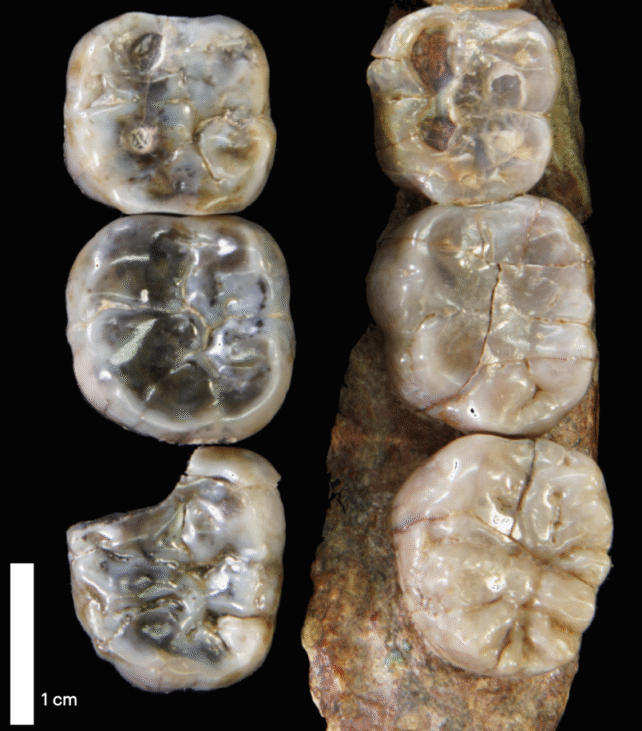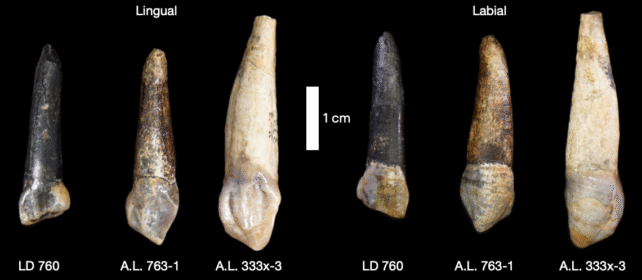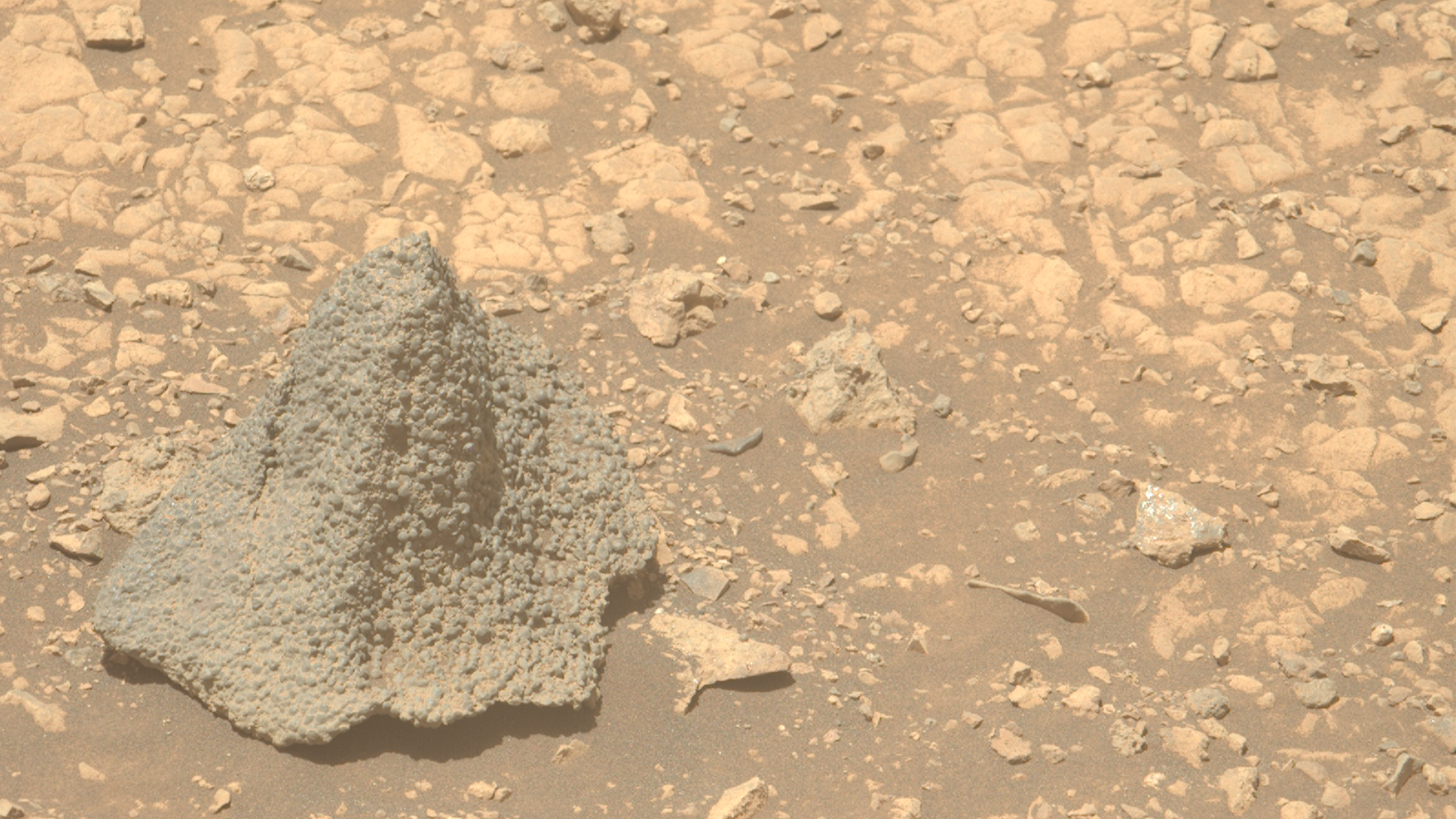The human family tree is looking more and more like an unruly bush.
Paleontologists have now uncovered the teeth of two different ancient human lineages at the same site in northeastern Ethiopia.
The discovery collapses the distance between the first of our genus and the last of the australopithecines in eastern Africa.
The two probably coexisted.
Related: Lucy Is 50: How a Bombshell 1974 Discovery Redefined Human Origins
“This new research shows that the image many of us have in our minds of an ape to a Neanderthal to a modern human is not correct – evolution doesn’t work like that,” says paleoecologist Kaye Reed from Arizona State University (ASU).
“Human evolution is not linear; it’s a bushy tree. There are life forms that go extinct.”

The Australopithecus genus – to which the famous ‘Lucy’ belongs – existed long before Neanderthals or our ancestors. It was one of the earliest hominins to habitually walk upright.
These new findings suggest that the lineage existed in eastern Africa right as our genus was evolving, more than 2.5 million years ago.
Perhaps we shared lands, or maybe we fought over resources. Who knows how closely we lived, or how often we crossed paths.
The two lineages seem to have evolved side by side for hundreds of thousands of years.
The remarkable discovery was made at a site called Ledi-Geraru, where scientists previously found the earliest evidence of the Homo genus: a jawbone dating back 2.78 million years.
Hidden nearby, paleontologists have now stumbled upon the teeth of another Homo species, dating back 2.59 million years, as well as teeth of an australopithecine from 2.63 million years ago – the only definitive evidence of the ape-like genus in eastern Africa at this time.

Lucy was also found in Ethiopia, and her species (Australopithecus afarensis) may be the lineage from which our Homo ancestors branched from. But just as our ancestors pop up in eastern Africa, the fossil evidence for A. afarensis runs cold.
The newly uncovered teeth from Ledi-Geraru now put our ancestors closer to australopithecines in time and space than ever before.
Scientists have yet to determine the exact species to which the Homo teeth and the Australopithecus teeth belong, but the latter don’t match Lucy or others of her kind.
Much seems to have changed in half a million years.
“We know what the teeth and mandible of the earliest Homo look like, but that’s it,” says lead author and paleontologist Brian Villmoare from ASU.
“This emphasizes the critical importance of finding additional fossils to understand the differences between Australopithecus and Homo, and potentially how they were able to overlap in the fossil record at the same location.”
Scientists previously suspected that both of these early human lineages overlapped in time, but the archaeological evidence didn’t exist until now.
The ancient teeth found at Ledi-Geraru help fill a sizable gap in the fossil record between 2.5 and 3 million years ago.
The total number of known hominins living in eastern Africa now rises to four: two distinct species of australopithecine, a ‘robust australopithecine’ offshoot called Paranthropus, and the early Homo genus.
“The hominin fossil record is more diverse than previously known,” conclude Villmoare and colleagues.
This story is just beginning…
The study was published in Nature.
Source link


